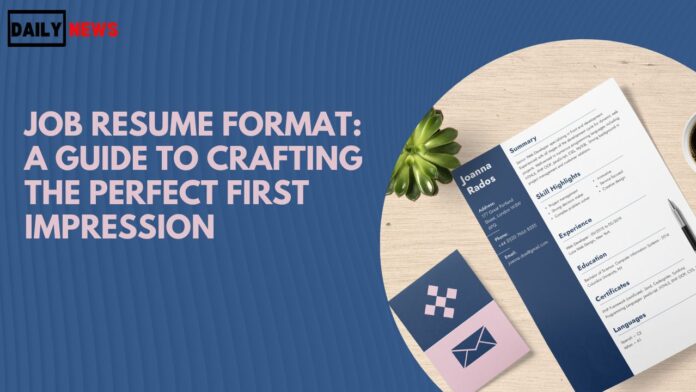When it comes to landing your dream job, the job resume format you choose can make all the difference. A resume serves as your personal marketing document, showcasing your skills, experience, and potential fit for a role. Selecting the right format not only highlights your strengths but also ensures that recruiters and automated systems (ATS) can easily assess your qualifications.
Types of Job Resume Formats
Different resume formats cater to various professional backgrounds and career stages. Here’s an overview of the primary types:
- Chronological Resume Format
- Functional Resume Format
- Combination Resume Format
- Targeted Resume Format
Choosing the Best Resume Format
Several factors influence the ideal resume format, including job type, experience level, and industry standards. Tailoring the format to align with both your experience and the job description can make your application stand out.
Chronological Resume Format
The chronological resume is one of the most popular and straightforward formats, listing job experience in reverse order.
- Structure: Contact information, summary, work experience, skills, education.
- Ideal For: Candidates with a steady work history in a single field.
Functional Resume Format
This format emphasizes skills over work history, ideal for those with gaps in employment or varied experiences.
- Structure: Contact information, skills, work experience, education.
- Ideal For: Job seekers changing careers or those with extensive skills but limited experience in the field.
Combination Resume Format
This hybrid format balances work history and skill set, useful for those with diverse experience and relevant abilities.
- Structure: Contact information, skills, work experience, education.
- Ideal For: Seasoned professionals transitioning into new roles.
Targeted Resume Format
Customizing each resume to a specific job position, the targeted format includes only relevant experiences and skills.
- Ideal For: Job seekers applying to specialized positions.
Essential Sections in Any Resume
Regardless of format, these sections are crucial in a resume:
- Contact Information: Include phone number, email, and LinkedIn profile.
- Objective or Summary: A strong opening statement tailored to the role.
- Experience: Reverse chronological or skill-based, depending on format.
- Skills: Highlight both hard and soft skills.
- Education: List relevant degrees and certifications.
How to Write a Winning Objective
An objective statement should concisely explain your career goals and value to the employer. Avoid vague language and focus on specific achievements.
Highlighting Work Experience
Organize job descriptions to emphasize key achievements. Use action words like “managed,” “developed,” or “implemented” to demonstrate contributions.
Showcasing Skills Effectively
List technical (hard) and interpersonal (soft) skills, tailoring them to the role.
Education and Certification
Depending on your experience level, place education near the top or bottom. List certifications relevant to the job.
Formatting Tips for a Professional Look
Keep a clean, readable format with consistent fonts and margins. Resumes are typically one page, though two pages are acceptable for those with extensive experience.
Resume Customization for ATS
Many companies use ATS to filter resumes. Avoid complex formatting, use keywords from the job description, and ensure that the resume is in a standard file format (PDF or DOCX).
Common Resume Mistakes to Avoid
- Typos or grammatical errors
- Listing irrelevant information
- Using generic language like “responsible for”
- Not tailoring the resume for each job application
Frequently Asked Questions (FAQs)
- What is the best resume format for a recent graduate?
- A combination or functional format is often best, as it highlights skills and education when work experience is limited.
- Can I use a creative format for a corporate job application?
- Stick to a traditional format unless applying to a creative field where unique designs are appreciated.
- How long should my resume be?
- Aim for one page; however, experienced professionals may need two pages.
- What’s an ATS-friendly resume?
- ATS-friendly resumes avoid graphics and use keywords from the job description.
- Should I include hobbies on my resume?
- Only if they are directly relevant to the job.
- How often should I update my resume?
- Update it at least once a year or after every significant job change.
Conclusion In today’s competitive job market, a well-crafted job resume format is essential for making a positive first impression. By tailoring your resume to fit each position, you can increase your chances of standing out to recruiters and hiring managers. Remember to update and refine your resume regularly to showcase your most current achievements and skills.

Er. Rishav Raj (Btech Computer Science)
Dr. Rishav Raj (Bachelor of Ayurvedic medicine and Surgery)
I am a professional blogger since 12 years worked for different healthcare blog as well as health care advisor for different multinational companies as well as Software developer for different healthcare and technology based software.i am here to share you some informative blog regarding news , healthcare and technology







